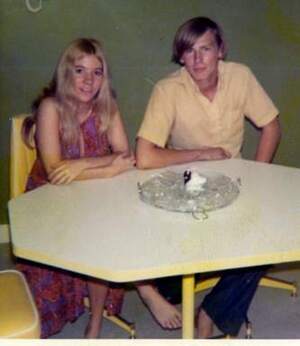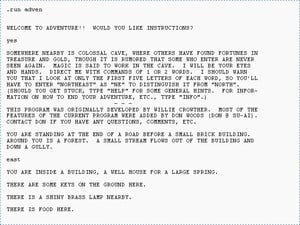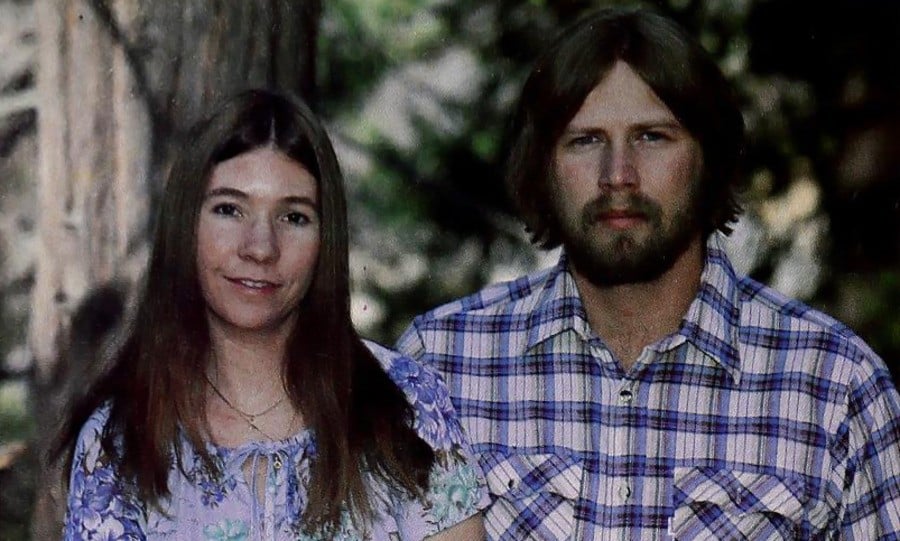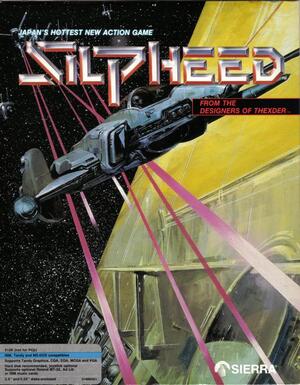
Roberta and Ken Williams are two people who arguably need no introduction. The founders of Sierra On-Line and the creators of Mystery House, King's Quest, and various other classic adventure games, they've deservedly been called "industry icons" for their contributions to the games industry.
Now, after twenty-five years away, Ken and Roberta Williams have finally returned with Colossal Cave, a modern reimagining of the original text adventure that inspired the pair to pursue a career in games in the first place. And as a result, the notoriously private couple has been giving countless interviews to try and drum up some publicity for the game's release (it's out today on Steam, Epic Games, Nintendo Switch, PS5, and Xbox X|S). Not being one to miss out, Time Extension requested some time to ask the couple some of our most pressing questions about their incredible career in the industry.
The following is our interview with Ken and Roberta (edited and condensed for clarity) about everything from the origins of Sierra and the impact of Colossal Cave, to their adventures across the globe, and the couple's miraculous return to games. During our almost 3-hour chat over video call, we should point out that Ken was hard at work doing some last-minute admin, so that explains why he's not exactly present throughout.
Time Extension: Just to start, it would be interesting to hear from Roberta - how did the two of you first meet?
Roberta Williams: Well, we were teenagers and we had both just graduated from high school the same year – but not the same school – and I had a boyfriend at the time. I was 18, and Ken was 17 — so I’m a year older than him – and the boyfriend happened to know Ken. So, through him, I met Ken and I was introduced to Ken.

I don’t know if my boyfriend wanted me to switch over or not, but anyway we met and he introduced me to Ken. We went out that night after being introduced on a double date. And a double date means that I was out with my boyfriend and Ken was out with another girl, and we went to a movie. From there, we just had that one encounter double-dating and then about five months later I still had the boyfriend and out of the blue, I get a phone call from a guy named Ken Williams. He goes, ‘Hi, we met once’, and I didn’t remember him. I just had started a community college in my area, and Ken had started going to Caltech in Pomona, California – his first year, Freshman year.
I was like ‘Ken Williams, Ken Williams, hmm’. I couldn’t quite place him. He was asking me out; he wanted to take me out to dinner. I didn’t just want to say yes to someone I didn’t know, so I asked him questions like ‘Can you remind me of where we met and how we met and what we did?’ and he mentioned all that and I was like, ‘Okay, I get it now, I know who you are.’ But I had another boyfriend at the time and I said ‘Well, I have another boyfriend now and I can’t’ and my dad was sitting there in the living room where the telephone was and suddenly, I heard this rustling sound. And I’m looking at him and I’m going, ‘What? What?’ And he’s like ‘Yes! Yes! Yes!’ In other words, go out with this guy; whoever it is on the phone, it’s got to be better than the boyfriend I had.
So, I go back to Ken and say, ‘Okay, we’ll go out to dinner’, figuring alright, I’ll just make my dad happy. And we did, and that was that; the boyfriend was gone and you know, afterward, I realized that the boyfriend was not really a great guy. My dad knew it. And I guess maybe we all owe my dad a big congratulations because it was because of him we’re together.
Time Extension: Playing Don Woods and William Crowther's Colossal Cave was obviously a huge moment for you both and led to your first game Mystery House and the formation of On-Line Systems (later Sierra On-Line). How did you discover the game? And what was the experience of playing Colossal Cave like for you?
Roberta Williams: Ken was working at a downtown Los Angeles computer engineering company called Informatics and he was also doing some contract work [at night] for another company, just to earn a little extra money.
He would bring home a Teletype machine from the Children's Hospital of Los Angeles and that [lived] at our house, so when he was done with his Informatics job he would come home and sign into the children’s hospital mainframe and do whatever contract programming they wanted him to do. And while he was working, he could get on their servers and find ‘Oh, well what else do they have here?’ So, he found this area on their computer where there were some games. I remember there were three of them. One was Star Trek, one was Football, and then there was this other game called Advent — and this is where he got interested.

He was like, ‘What is that? I know what Star Trek is and Football, but Advent?' So, he clicks on it and opens it up and again it was on a Teletype machine, so it was not on a monitor. The game comes up on the roll of paper and it said, ‘You are standing by the end of a road in front of a small brick building’ and that’s the beginning text of Colossal Cave. It was a little paragraph about where you’re standing and what you’re seeing. He saw that and he saw that the directions just said to use one- or two-word commands to talk to the game, so he tried typing in ‘Go building’. Suddenly, he was right in front of the building, not in front of the road. It said, ‘You’re standing in front of a little brick building, the door is closed’, and he would say, ‘Open door’. And it would say ‘The door is open’. That led him in further and further and he played for a while and then he came to me and something in him told him I might be interested in seeing this because he knew I was kind of into fantasy and I loved to read and I was a fairly imaginative person.
I think he was thinking when he goes to work at Informatics that I could maybe play this during the day because he’s not on the Teletype during the day. So I remember him saying, ‘Hey, come here, take a look at this, you might be interested.’ He sat me down and he started it up again and he had gone in far enough to tell me what to type in and get me going. And it didn’t take long to get me going and once I got going, I couldn’t stop, and in fact, I could not get this game out of my head. I played it for weeks, practically ignoring my two little children. I loved it. I was literally obsessed with it. I would go to bed at night thinking about this game and the obstacle in front of me that I needed to get past or the puzzle that I needed to solve.
A famous one was I couldn’t get past the Dragon. There’s a dragon in this game and he was blocking me from going forward further into the cave and I wanted so badly to go further into the cave and there he was, he was just right there and he wouldn’t let me by. I remember going to bed and thinking, ‘How do I get past?’ And of course, you could type things in — it had a parser – and I would try everything I could think of to get past this silly dragon and I just couldn’t do it, and it was like the one time I had to get a hint. Of course, then, there was no internet, so where do you go? There were no emails. There was none of that.
It was driving me crazy, so what we wound up doing was there were like four computer stores in all of Los Angeles County — this is early 1980. January 1980 — we’d go there and do some shopping — Ken wanted floppy disks or whatever he wanted — and we’d go there and we brought up this Colossal Cave or Advent and they said, ‘Oh yeah, we know that game.’ And I said, ‘How do you get past the dragon?’ They told me how, but I’m not going to tell you how, and I did. But I was obsessed. And when I finished it, I wanted to play more games like it and nothing had ever hit me like this.
Time Extension: How did you then go from playing Colossal Cave to wanting to make your own game with Mystery House?
Roberta Williams: I had been searching around trying to figure out what I was going to do with my life. Ken knew what he was; he was a top programmer. So we knew he was going to go up in the programming world. We were pretty set in that respect. But I didn’t know what I was going to do. I was a mother. I had done some computer work; I had done some work with COBOL, and I had had some jobs operating IBM 360 mainframes for the County of Los Angeles. It’s not like I hadn’t done anything, but it wasn’t satisfactory by any means and I didn’t know what I wanted to do.
I wanted to do something and this game struck me so hard that I was compelled to write my first game, never having done it. Never, never. In fact, I’d never even played a computer game except for this one. It was one of those things that you can’t explain: why I would do that? I just did and I was obsessed with doing it. It became Mystery House and the rest is history. That’s what Colossal Cave did for me. It gave me my career, and that’s why we’re back here again.
Time Extension: You mentioned earlier that your father was responsible for you and Ken being together today. I believe Ken also mentions in his book Not All Fairy Tales Have Happy Endings: The rise and fall of Sierra On-Line that the decision to relocate to the mountains to start Sierra was also on account of your parents. Was that always the plan to be in that sort of natural environment that kind of breeds creativity in and of itself?
Roberta Williams: We were living in the Los Angeles area when we started Sierra. Not in Los Angeles, but out a little way. But still, we were out in the big population area of Los Angeles county. Ken was working at this point. I had just had my second child. I wasn’t working at the moment; I was taking care of our two kids.
Ken had to drive an hour each way on freeways to get to work and back, and my parents had just moved out to this beautiful, little mountain community in central Northern California. We would drive up there from Los Angeles to visit them and we were like, ‘Oh, wouldn't it be great to raise our two little kids in a place like that?’ In this little mountain town, rather than around all the stuff that goes on around Los Angeles with all the smog and all the traffic and everything – wouldn’t it be great!
So, I wrote my first game Mystery House; Ken and I worked on it together. And we put it out there in the world and it was this instant hit. And it was really the first computer game with graphics. At that point, the Apple II was our platform of choice, because that’s the computer we had. But there were no games with graphics at the time. There were text games and moving pixels around to knock other pixels around, but no real graphics. We thought Mystery House was a fun little project to do, but we didn’t really have the plan to start a company or anything. But the immediate popularity of it, Ken said to me, ‘Design another game!’

So that turned out to be The Wizard and the Princess, and we immediately could see that there was a future here. He quit his job and at this point, we said, ‘Well, we can stay here where we’re living, near Los Angeles, or maybe this is the opportunity we were looking for to be able to just move up north to where my parents live and live in this wonderful, idyllic place and raise our kids there.’
We had a sense that it was going to grow, which meant we were probably going to hire people, which meant that we’d have to get an office, and right then, it was just him and I still. So, we just made that decision and we just moved, bought a home up there, and moved everything, and probably within 2-3 months of living up there, we were already beginning to hire people and begin the growth of Sierra. And the name Sierra comes from the Sierra Nevada Mountain range.
Time Extension: And the logo too, I believe.
Roberta Williams: Yeah, where Oakhurst, California is located, it’s just like 10 miles south of the southern gateway into a very famous national park in the United States, and that national park is called Yosemite. And the Half Dome is a prominent feature of that.
The other prominent landmark in Yosemite Valley is called El Capitan. And then there’s a waterfall called the Bridal Veil. It’s one of the longest falling waterfalls in length – it's very narrow, but it falls a long way and is very beautiful. Anyway, that’s why the Half Dome came up; we lived close to it.
Time Extension: What was the inspiration for developing King's Quest into its own project? I believe Ken said previously that IBM had asked Sierra for something similar to Wizard and the Princess for the IBM PCjr, but you were tempted to do something more ambitious which eventually became King's Quest. Do you remember how you came to that decision?
Roberta Williams: IBM came to us and wanted me to design an adventure game along the lines of my previous Wizard and the Princess for the IBM Jr. But I was ABLE to do much more with King’s Quest (than I previously had been able to accomplish with the Wizard and the Princess) because of the much more advanced technology in the PC Jr than was in the Apple II computers…so I took advantage of all of those advancements…of course! And I had been wanting to create a game with a third-person character, which up to then, I was unable to do because of the inability of the Apple II computer to accomplish that.
I was very excited to be able to really create once I got my hands on the PC Jr. – and it was up, up, and away at that point for me!
Time Extension: Just to bring Ken in, what’s interesting in your book is that you say people primarily think of Sierra as an adventure game developer, but there are also so many different things that you've been involved with outside of that genre. How did it come about that you got involved with Japanese companies like Sega and Game Arts to do home computer ports of Frogger, Thexder, and Silpheed?
Ken Williams: A lot of the coin-op machines in those days came out of Japan and I kind of saw coin-op as the best of all the platforms for gaming. Games like Donkey Kong, and Space Invaders, so it seemed important to go to Japan and distribute our games there, plus try to license games like Frogger (which we published).

I’m amazed [Sega] licensed it to us, but at the time it wasn’t really a big market yet. I’m sure that for a big hit like Frogger, if I called them today and tried to license it, we’d be talking about 1 million bucks. In those days, they probably asked for $500 or something upfront. It was easy. That was why we were interested in Japan. And I went there trying to understand what the market was and I assumed there would be PC-compatible computers, but there weren’t.
There was something called the NEC 9801. It was not really exactly IBM-compatible. It didn’t run Windows — as a matter of fact, there wasn’t Windows in those days. It was DOS, but it was a really weird version of DOS. And we never ever, I don’t think, made any money in Japan. But we did do the Game Arts relationship and made good money selling Thexder and Silpheed. We got Frogger. Pac-Man, we also tried to license, but we never could, so we did our own version of it.
Overall, I would call it a failed relationship with Japan. The money was mostly in licensing other people to do our games on like the NES, but that was strictly cashing cheques. For whatever reason, we were never very good at developing games on consoles. The PS5 version of Colossal Cave was just approved a couple of days ago, and I guess the Switch, which we just got approved this week. I’ve been in the industry for thirty years and those are the first two games I’ve gotten approved for a console platform ever for Japan. And even those were painful.
Please note that some external links on this page are affiliate links, which means if you click them and make a purchase we may receive a small percentage of the sale. Please read our FTC Disclosure for more information.






Comments 3
I recognized the name Cerf right away from having seen old episodes of What's My Line? from the '50s on television where Bennett Cerf was often a panelist. I have a feeling the rewrites for the Dark Crystal game were quite extensive, especially during a time when gaming was still new to so many people. Very interesting to read and it's nice that they were able to go down that path and find the success that they did with it. And regarding King's Quest 4, when it was released it was still early enough to assume male players wouldn't want to play as a female character. This game wouldn't be far behind Metroid and Phantasy Star that all helped to change that, and show that if the game is good, it didn't really matter, or could even be a better choice.
I absolutely adore Ken and Roberta! They are legends, give great interviews, and they are by all accounts very nice people. They made some fantastic games, too!
@JackGYarwood if I may point out a minor yet significant typo: I believe the computer Ken is referring to when he talked about going to Japan was the NEC 9801, sometimes called the PC-98, not the "NES 9801." Lest someone confuse it with the Famicom xD
@JJtheTexan Fixed! Appreciate you pointing it out
Show Comments
Leave A Comment
Hold on there, you need to login to post a comment...